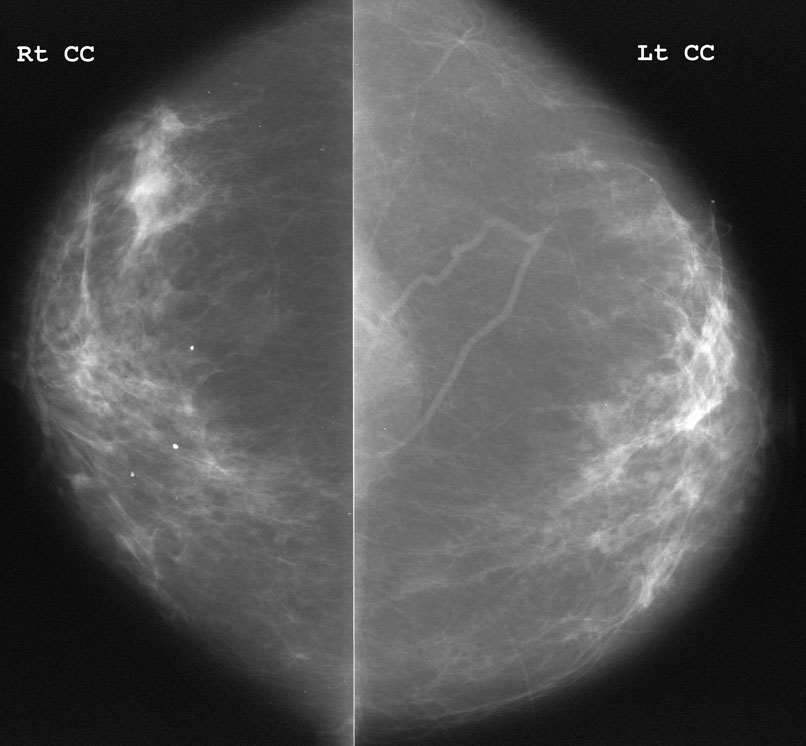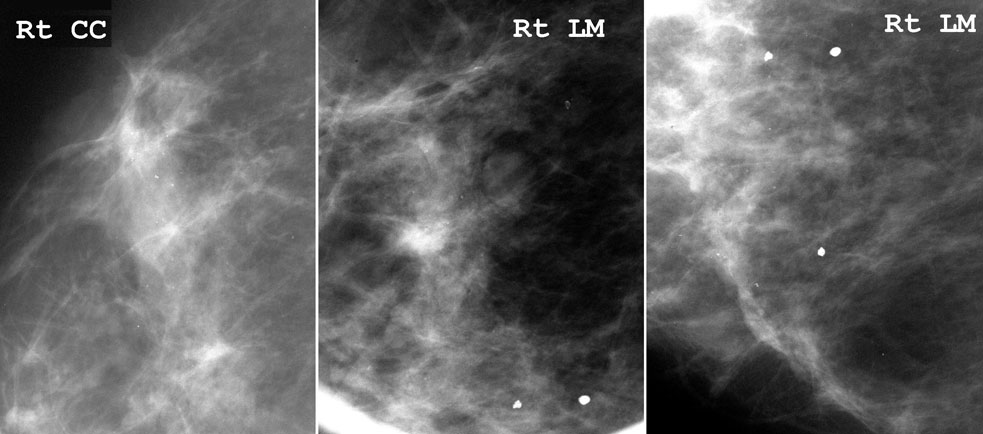Teaching Files
Archived Case 16
Contributed by: Katherine E. Dee, MD -
focal asymmetrThis focal asymmetry was noticed on the screening mammogram, and subsequent spot compression magnification views are shown below.
What is your assessment?
BI-RADS 1 - Normal - The focal asymmetry does not persist on diagnostic viewsBI-RADS 2 - Benign - Asymmetric glandular tissue is seen
with some benign-appearing microcalcifications
BI-RADS 3 - Probably Benign - Asymmetric glandular tissue is seen
with some probably benign-appearing microcalcifications
BI-RADS 4 - Suspicious - The focal asymmetry is associated with heterogeneous calcifications
BI-RADS 5 - Highly Suggestive of Malignancy - The focal asymmetry is associated with classic pleomorphic classifications consistent with DCIS
The focal asymmetry is associated with heterogeneous calcifications which are not present in the remainder of the breast tissue. These are not classic pleomorphic calcifications, and thus are not diagnostic of DCIS. However, they are mixed shapes and sizes, and because this is not a global process, these were considered suspicious.
A stereotactic biopsy yielded fibrocystic change
What is the approximate positive biopsy rate that is recommended in mammography guidelines published by the ACR?
10 %30 %
50 %
70 %
Thus, 2 of every 3 biopsies yield benign results. This is for a screening population only.
There is no published guideline for diagnostic mammography, but published studies suggest that this number should be even higher– because patients coming to diagnostic work-up for breast problems (especially palpable lumps) have a higher likelihood of having cancer than those who are asymptomatic [Dee & Sickles, AJR, 2000].
Every radiologist practicing mammography is required to perform a medical audit of her/his practice, and this is one of the critical variables analyzed. If your positive biopsy rate is 10%, that means you are performing too many biopsies on benign findings biopsying in order to find a cancer. On the other hand, if your positive biopsy rate is 70%, that means you are not performing enough biopsies on some suspicious findings and likely missing cancers (or you are better at picking out cancers than the world’s experts!).


